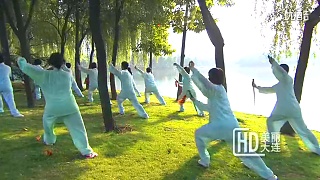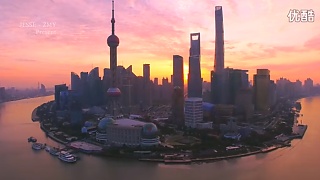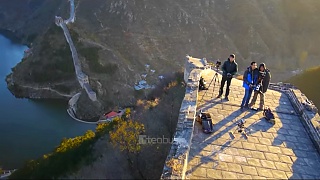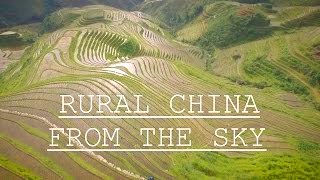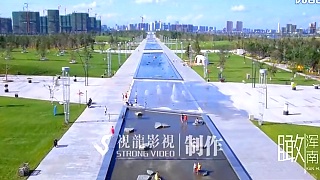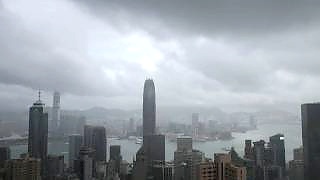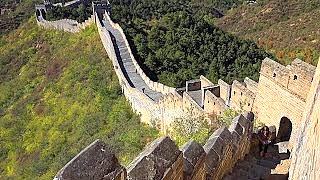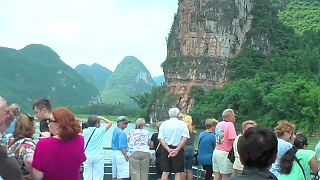
|
ShenZhen: 20 Kid-Friendly Places to Visit
Window of the World (世界之窗 Shìjiè Zhī Chuāng): Theme park with replicas of famous landmarks from around the world.
Happy Valley (欢乐谷 Huānlègǔ): Amusement park with rides, shows, and attractions for all ages.
Shenzhen Safari Park (深圳野生动物园 Shēnzhèn Yěshēng Dòngwùyuán): Safari park with a variety of animals, shows, and interactive experiences.
Sea World (海上世界 Hǎishàng Shìjiè): Waterfront area with restaurants, shops, and entertainment venues.
Shenzhen Children's Palace (深圳市少年宫 Shēnzhèn Shì Shàonián Gōng): Cultural center offering classes, workshops, and performances for children.
Fairy Lake Botanical Garden (仙湖植物园 Xiān Hú Zhíwùyuán): Botanical garden with plant collections, walking trails, and scenic landscapes.
Shenzhen Splendid China Folk Village (深圳锦绣中华民俗村 Shēnzhèn Jǐnxiù Zhōnghuá Mínsú Cūn): Theme park with exhibits on Chinese culture, history, and traditions.
Shenzhen Mangrove Nature Reserve (深圳红树林自然保护区 Shēnzhèn Hóngshùlín Zìrán Bǎohù Qū): Nature reserve with mangrove forests, boardwalks, and birdwatching.
Dameisha Beach (大梅沙海滨公园 Dà Méishā Hǎibīn Gōngyuán): Beach park with sandy shores, water sports, and seaside attractions.
Xiaomeisha Beach (小梅沙海滨公园 Xiǎo Méishā Hǎibīn Gōngyuán): Beach park with swimming areas, water slides, and recreational facilities.
Shenzhen Lianhuashan Park (深圳莲花山公园 Shēnzhèn Liánhuā Shān Gōngyuán): Park with gardens, temples, and scenic views of the city.
Shenzhen Children's Library (深圳市少年儿童图书馆 Shēnzhèn Shì Shàonián Értóng Túshūguǎn): Library with children's books, storytelling sessions, and educational activities.
Shenzhen Science Museum (深圳科技馆 Shēnzhèn Kējìguǎn): Museum with interactive exhibits, experiments, and demonstrations on science and technology.
Shenzhen Happy Harbor (深圳欢乐港湾 Shēnzhèn Huānlè Gǎngwān): Waterfront area with shops, restaurants, and entertainment options for families.
Shenzhen Museum (深圳博物馆 Shēnzhèn Bówùguǎn): Museum with exhibits on Shenzhen's history, culture, and development.
Shenzhen International Garden and Flower Expo Park (深圳国际园林花卉博览园 Shēnzhèn Guójì Yuánlín Huāhuì Bólǎn Yuán): Park with botanical gardens, flower displays, and cultural events.
Shenzhen Poly Theatre (深圳保利剧院 Shēnzhèn Bǎolì Jùyuàn): Performing arts venue with theater productions, concerts, and shows suitable for families.
Shenzhen OCT Harbour (深圳华侨城欢乐港湾 Shēnzhèn Huáqiáochéng Huānlè Gǎngwān): Waterfront area with shopping, dining, and entertainment options overlooking the bay.
Shenzhen Guanlan Printmaking Base (深圳观澜版画基地 Shēnzhèn Guānlán Bǎnhuà Jīdì): Art village with printmaking studios, galleries, and workshops.
Shenzhen Fairy Lake Botanical Garden (深圳仙湖植物园 Shēnzhèn Xiān Hú Zhíwùyuán): Botanical garden with plant collections, walking trails, and scenic landscapes.
ShenZhen: 30 More Places to Visit
Shenzhen Window of the World (深圳世界之窗 Shēnzhèn Shìjiè Zhī Chuāng): Theme park with replicas of famous landmarks from around the world.
Shenzhen Happy Valley (深圳欢乐谷 Shēnzhèn Huānlègǔ): Amusement park with rides, shows, and attractions for all ages.
Shenzhen Safari Park (深圳野生动物园 Shēnzhèn Yěshēng Dòngwùyuán): Safari park with a variety of animals, shows, and interactive experiences.
Shenzhen Sea World (深圳海上世界 Shēnzhèn Hǎishàng Shìjiè): Waterfront area with restaurants, shops, and entertainment venues.
Shenzhen Children's Palace (深圳市少年宫 Shēnzhèn Shì Shàonián Gōng): Cultural center offering classes, workshops, and performances for children.
Shenzhen Fairy Lake Botanical Garden (深圳仙湖植物园 Shēnzhèn Xiān Hú Zhíwùyuán): Botanical garden with plant collections, walking trails, and scenic landscapes.
Shenzhen Splendid China Folk Village (深圳锦绣中华民俗村 Shēnzhèn Jǐnxiù Zhōnghuá Mínsú Cūn): Theme park with exhibits on Chinese culture, history, and traditions.
Shenzhen Mangrove Nature Reserve (深圳红树林自然保护区 Shēnzhèn Hóngshùlín Zìrán Bǎohù Qū): Nature reserve with mangrove forests, boardwalks, and birdwatching.
Shenzhen Dameisha Beach (深圳大梅沙海滨公园 Shēnzhèn Dà Méishā Hǎibīn Gōngyuán): Beach park with sandy shores, water sports, and seaside attractions.
Shenzhen Xiaomeisha Beach (深圳小梅沙海滨公园 Shēnzhèn Xiǎo Méishā Hǎibīn Gōngyuán): Beach park with swimming areas, water slides, and recreational facilities.
Shenzhen Lianhuashan Park (深圳莲花山公园 Shēnzhèn Liánhuā Shān Gōngyuán): Park with gardens, temples, and scenic views of the city.
Shenzhen Children's Library (深圳市少年儿童图书馆 Shēnzhèn Shì Shàonián Értóng Túshūguǎn): Library with children's books, storytelling sessions, and educational activities.
Shenzhen Science Museum (深圳科技馆 Shēnzhèn Kējìguǎn): Museum with interactive exhibits, experiments, and demonstrations on science and technology.
Shenzhen Happy Harbor (深圳欢乐港湾 Shēnzhèn Huānlè Gǎngwān): Waterfront area with shops, restaurants, and entertainment options for families.
Shenzhen Museum (深圳博物馆 Shēnzhèn Bówùguǎn): Museum with exhibits on Shenzhen's history, culture, and development.
Shenzhen International Garden and Flower Expo Park (深圳国际园林花卉博览园 Shēnzhèn Guójì Yuánlín Huāhuì Bólǎn Yuán): Park with botanical gardens, flower displays, and cultural events.
Shenzhen Poly Theatre (深圳保利剧院 Shēnzhèn Bǎolì Jùyuàn): Performing arts venue with theater productions, concerts, and shows suitable for families.
Shenzhen OCT Harbour (深圳华侨城欢乐港湾 Shēnzhèn Huáqiáochéng Huānlè Gǎngwān): Waterfront area with shopping, dining, and entertainment options overlooking the bay.
Shenzhen Guanlan Printmaking Base (深圳观澜版画基地 Shēnzhèn Guānlán Bǎnhuà Jīdì): Art village with printmaking studios, galleries, and workshops.
Shenzhen Fairy Lake Botanical Garden (深圳仙湖植物园 Shēnzhèn Xiān Hú Zhíwùyuán): Botanical garden with plant collections, walking trails, and scenic landscapes.
Shenzhen Window of the World (深圳世界之窗 Shēnzhèn Shìjiè Zhī Chuāng): Theme park with replicas of famous landmarks from around the world.
Shenzhen Happy Valley (深圳欢乐谷 Shēnzhèn Huānlègǔ): Amusement park with rides, shows, and attractions for all ages.
Shenzhen Safari Park (深圳野生动物园 Shēnzhèn Yěshēng Dòngwùyuán): Safari park with a variety of animals, shows, and interactive experiences.
Shenzhen Sea World (深圳海上世界 Shēnzhèn Hǎishàng Shìjiè): Waterfront area with restaurants, shops, and entertainment venues.
Shenzhen Children's Palace (深圳市少年宫 Shēnzhèn Shì Shàonián Gōng): Cultural center offering classes, workshops, and performances for children.
Shenzhen Fairy Lake Botanical Garden (深圳仙湖植物园 Shēnzhèn Xiān Hú Zhíwùyuán): Botanical garden with plant collections, walking trails, and scenic landscapes.
Shenzhen Splendid China Folk Village (深圳锦绣中华民俗村 Shēnzhèn Jǐnxiù Zhōnghuá Mínsú Cūn): Theme park with exhibits on Chinese culture, history, and traditions.
Shenzhen Mangrove Nature Reserve (深圳红树林自然保护区 Shēnzhèn Hóngshùlín Zìrán Bǎohù Qū): Nature reserve with mangrove forests, boardwalks, and birdwatching.
|

 DaLian 大连 city in time-lapse
DaLian 大连 city in time-lapse
